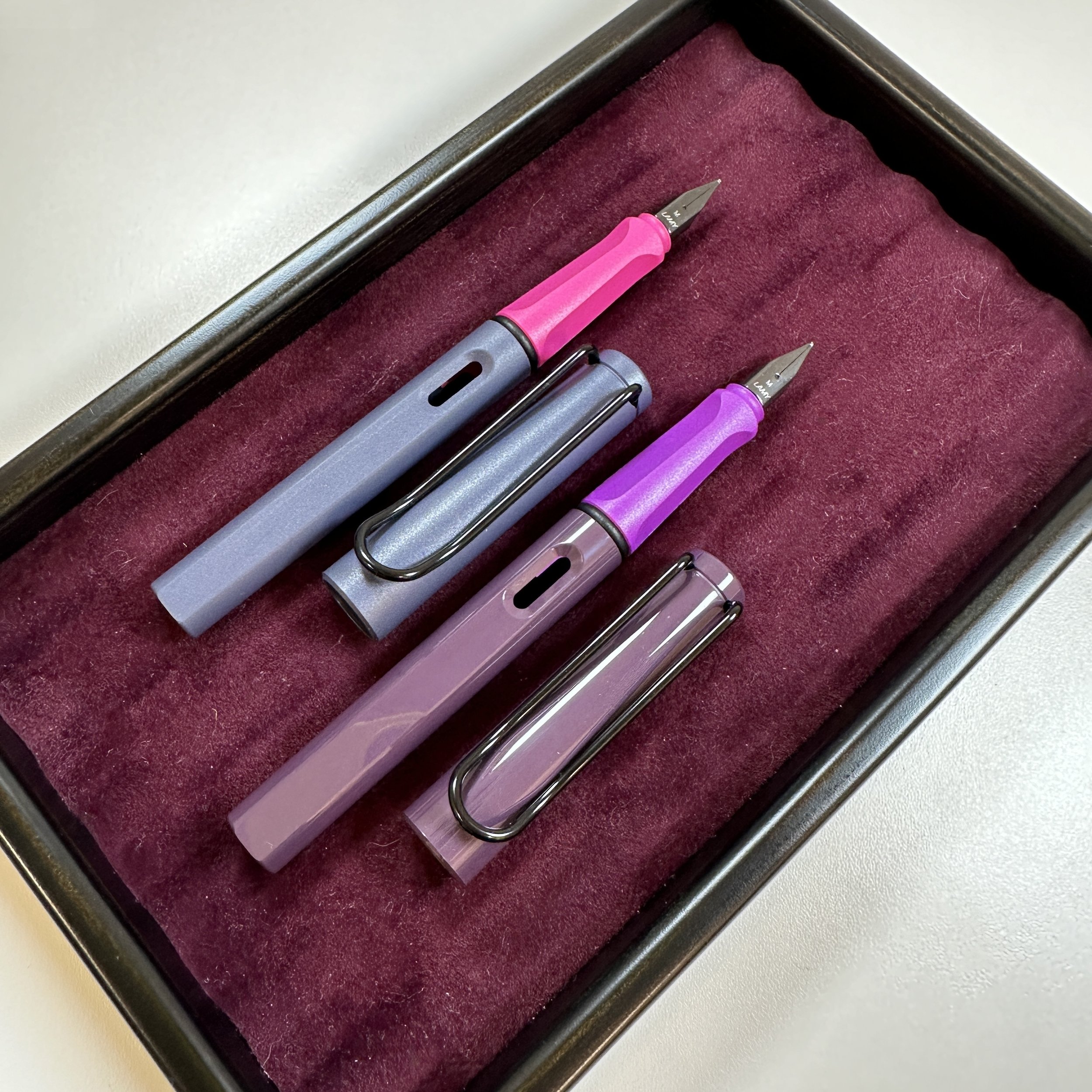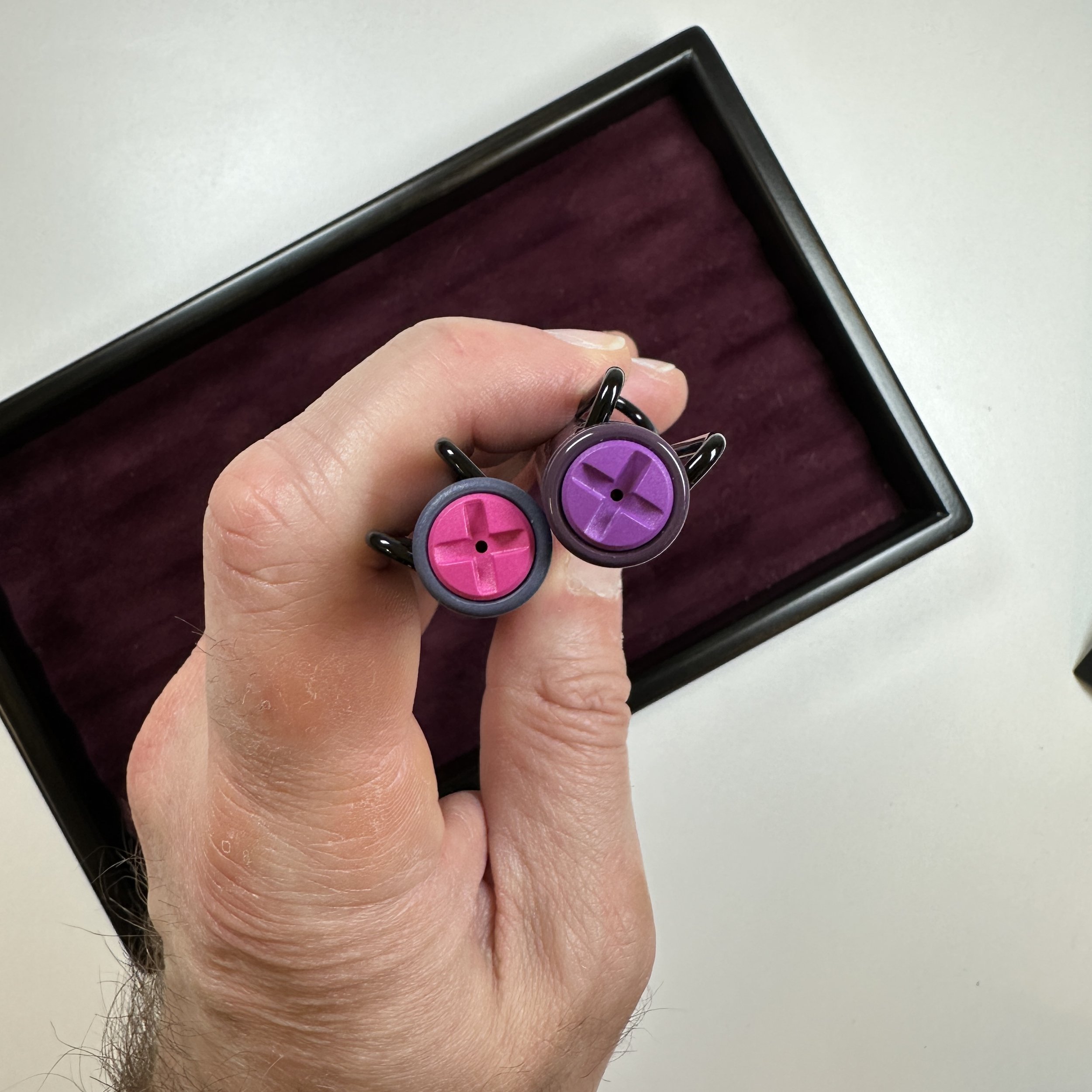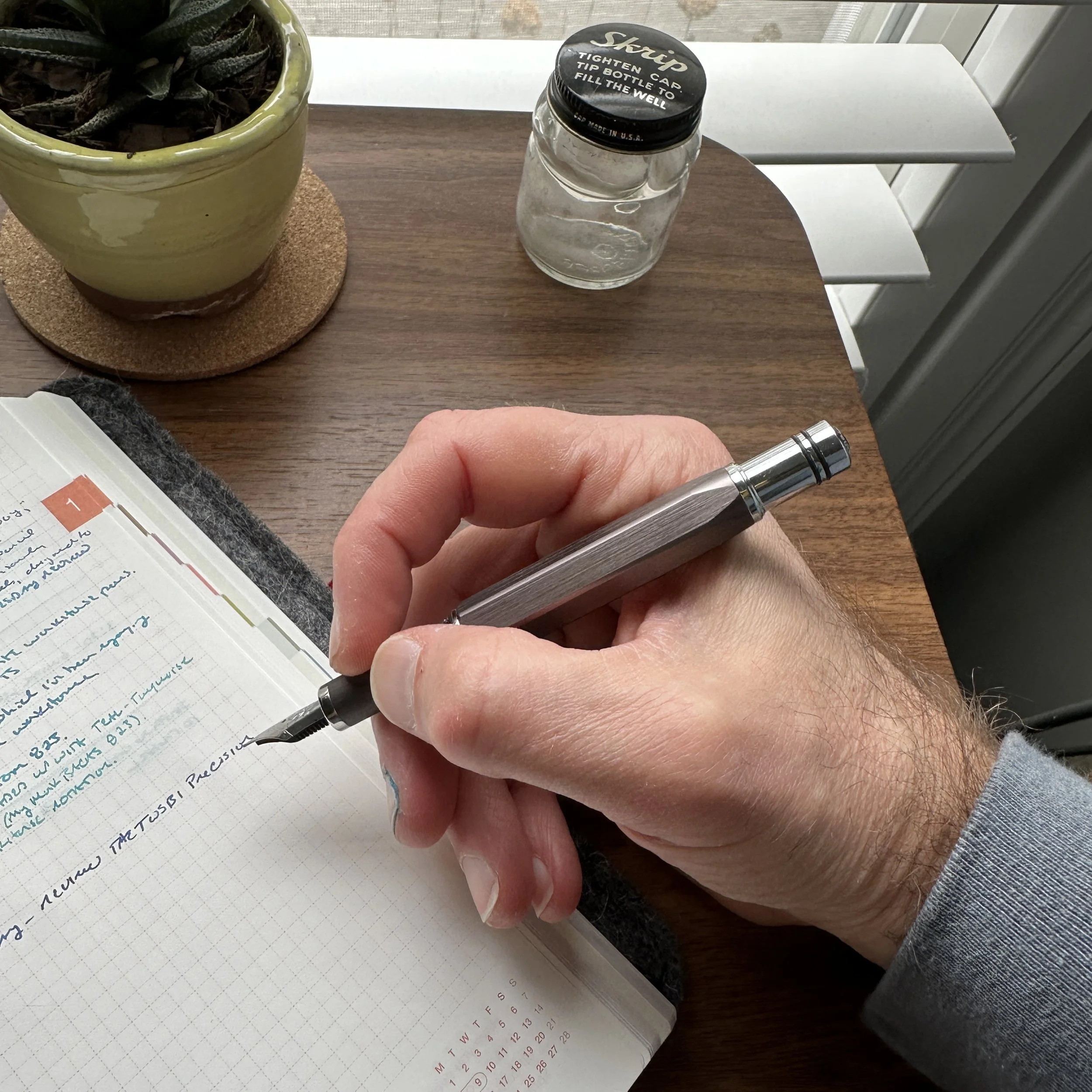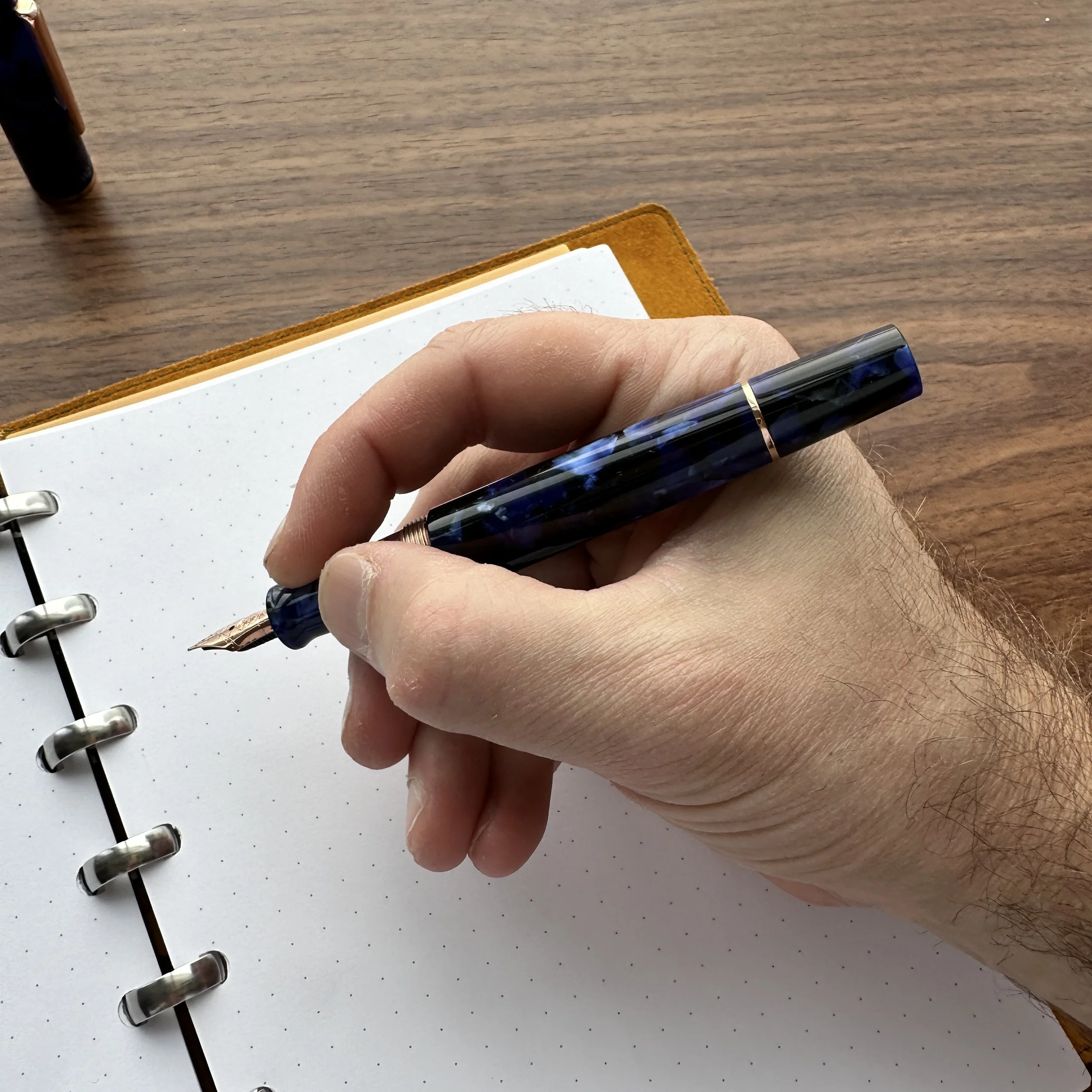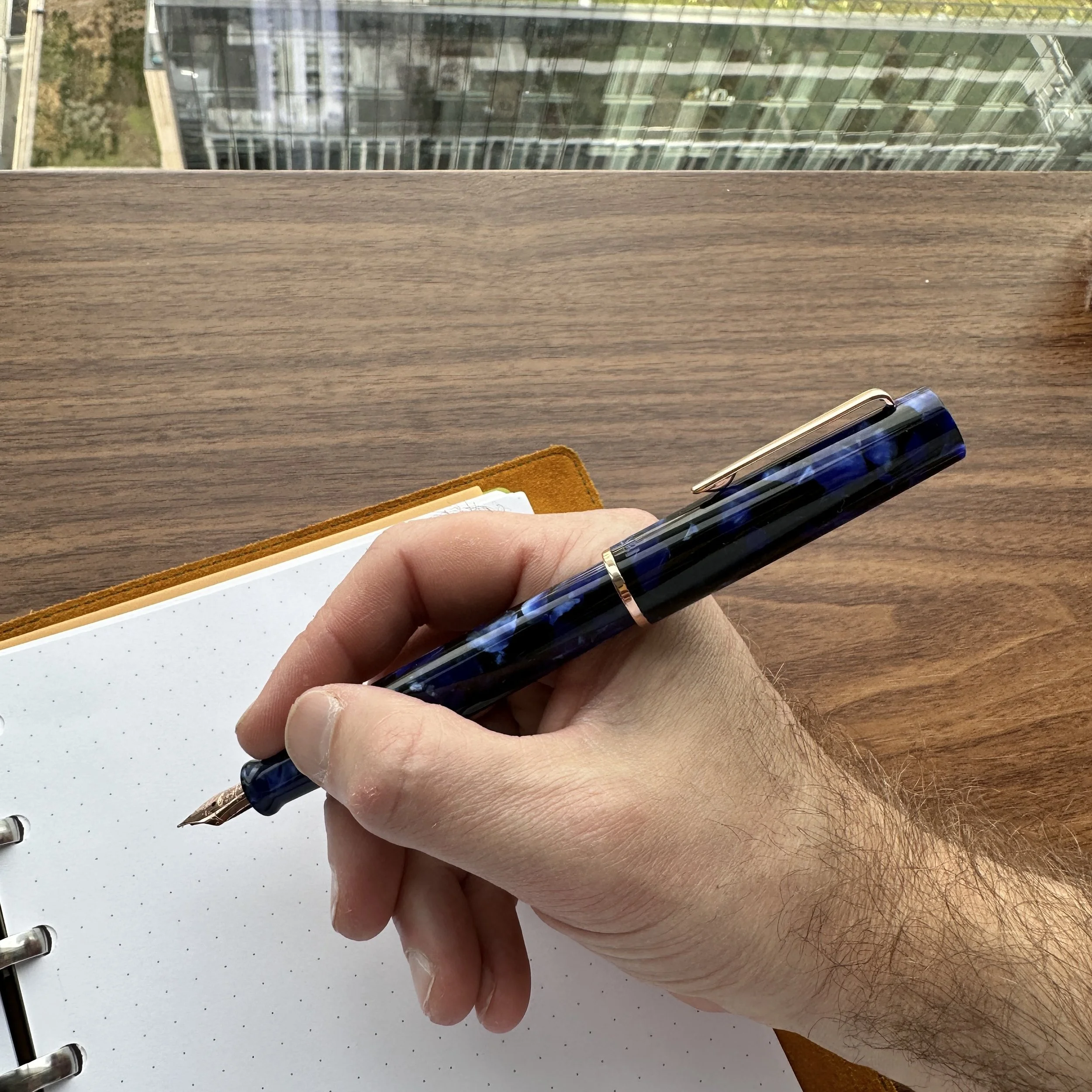Lamy takes a lot of criticism - some fair, some not - about a perceived lack of “risk-taking” in their product line, especially when it comes to special editions. Frankly, Lamy tends to err on the side of caution, releasing pens (ahem, Safaris) certain to sell well among a broader, more casual audience even if they don’t excite the pen enthusiast crowd. As a longtime Lamy fan, this year’s Safari release is a welcome departure from what Lamy typically does, and I hope it signals the beginning of more experimentation with color.
Two New 2024 Lamy Safari Designs: “Violet Blackberry” and “Pink Cliff”
This year, Lamy appears to have specifically responded to criticism of their recent limited edition “Strawberries and Cream” Safari release for failing to mix and match colors. This time, not only have they given us multicolored Safaris, but these have radically different barrels and sections, including one pen with a hot pink section that caught me totally by surprise with how good it looked.
I love that one of the two pens is glossy and the other is matte. Many enthusiasts strongly prefer one of the two Safari finishes, and I’ll take a matte Safari any day.
“Violet Blackberry” features a two-toned purple finish, with a glossy muted dark violet/eggplant barrel and a brighter, matte section in a tone of purple that I assume is the “blackberry” portion of this pen. Paired with a black clip and nib, both colors make for a nice combination. That said, I’m partial to the second pen “Pink Cliff.” (Shocking, right?) Despite finding the name a bit confusing, I’m all over this one, which pairs a matte slate-blue barrel with a bright pink section.
Each pen has a cap finial to match the section. The colors look much more vibrant (and honestly better) in person than they did in the early promotional photos that Lamy released. I hope that once people see these pens in person - or see retailers’ own product photos - the pens will get more attention.
Two New Matching Inks for 2024
As I mentioned up top, I consider Lamy to be at their best when they release darker inks. Their lighter tones tend toward undersaturation, but their standard blue-black remains a favorite, and past limited edition inks such as Petrol and Dark Violet command steep prices on the secondary market. Though perhaps not quite as unique as those two tones, this year’s “Cliff” and “Violet Blackberry” releases return to that darker palette. I would describe “Cliff” as a dark navy with subtle red/pink sheen, and the more conservative of the two options. “Violet Blackberry” will get the most attention - it’s a super-sheener ink that lays down a dark purple line when wet, but a gold sheen takes over almost immediately. Despite the heavy sheen, the ink seems to behave well, and my initial swatch didn’t have issues with smearing after it dried. Longer term testing will be required, of course.
I love the base tones for both of these inks. As you’ll see in the next picture, the gold sheen appears as the ink dries and will cover most of the purple, in the same way that the greenish sheen on Dark Lilac did in wetter pens.
Takeaways and Where to Buy
Though the color combinations are somewhat nontraditional, I really enjoy what Lamy has done this year. So far, Pink Cliff is my favorite of the two pen designs, mainly because of the matte finish. The juxtaposition of the blue-grey and “hot pink” will also annoy people at work - even better! (j/k) And while I can’t yet declare a favorite between the two inks, I suspect I will lean towards “Cliff” because I’m a sucker for really deep blues. That said, I’m absolutely inking up both this morning into their respective matching pens, and plan to write with them for a while before declaring a winner. I’m not normally a fan of the so-called “sheen monster” inks, but I might enjoy Violet Blackberry if keeps up the good behavior.
Since the TGS Curated Shop is an authorized Lamy retailer, we have stock of all of the new Lamy Safari pens, including fountain pens and rollerballs. We also have limited stock of the bottled ink, though we can probably get more if it sells out quickly. When I visited with Lamy at NY Now earlier this month, I didn’t get the impression that supply was overly limited, though the cartridges are not yet available.
The Gentleman Stationer is supported entirely by purchases from the T.G.S. Curated Shop and pledges via the T.G.S. Patreon Program.
